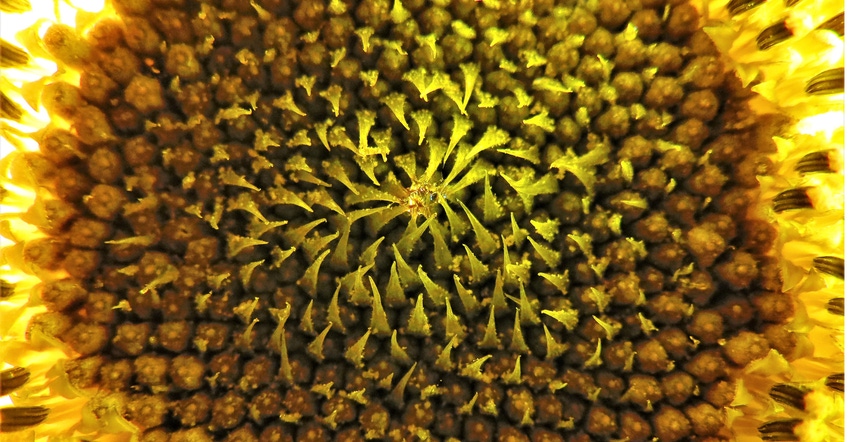September 15, 2021

Sunflower producers concerned about some of their crop not harvestable for seed should consider them for forage.
“The decision to harvest sunflowers as forage, particularly silage, requires careful consideration of several factors,” says Zac Carlson, North Dakota State University Extension beef cattle specialist.
“Sunflower silage can make a suitable feed for beef cows,” he says. “Generally speaking, sunflower silage is about 80% of the feeding value of corn silage. Still, the challenge is getting it put up, because sunflowers typically don’t dry down well.”
Consequently, dry feed must be added to the silage pile to reduce the moisture level to a point where seepage is not a major problem.
The moisture problem in sunflower silage can be corrected by several means. LaDon Johnson, former NDSU animal science specialist, suggests blending corn and sunflower silages when packing as one method. He advises a blending ratio of 1 load of sunflower silage to 3 or 4 loads of corn silage. He also suggests waiting seven to 10 days following a killing frost to facilitate drydown. Some varieties may take longer, and waiting longer also increases the risk of wind damage to the crop and greater dry matter loss.
Johnson also advises blending dry forage into the silage pile to reduce the moisture content.
Optimal moisture content in sunflower silage appears to be 60% to 72%, or 28% to 40% dry matter. To minimize effluent seepage problems, the moisture level will likely need to be below 65%. Silage that is too wet will also result in undesirable clostridial fermentation, reducing the forage quality, which may limit voluntary intake due to palatability.
Keep in mind the target moisture of 60% to 72%. Harvesting immature sunflowers can produce silage with lower fiber, lignin and fat content, possibly improving the forage quality.
Nutritional value
Depending on the variety, sunflower silage is lower in energy at 61% to 66% total digestible nutrients than corn silage at 68% TDN. The lower energy of sunflower silage is mainly due to the greater fiber content of the silage, which is about a third more than corn silage and three times the amount of lignin, the indigestible portion of the fiber.
However, confectionery and oil-type sunflowers can make silages that contain more protein, fat and calcium than corn silage at 100% dry matter.
“Due to the fat content of sunflower silage, the forage should be limited to one-half or less of the diet dry matter basis,” Carlson says. “In forage-based diets, dietary fat content exceeding 3% will reduce the intake and digestibility of forages. Likewise, the high fiber content of sunflower silage may reduce intake by slowing down the rate of passage in the rumen.”
As with making any silage, allow 28 days for the ensiling process to occur before feeding or exposing the forage to oxygen.
What’s the price?
Pricing silages can be complex. Factors that may influence the value of sunflower silage include:
substitute feed costs
fertilizing and harvesting costs
removal of residue and nutrients from field
storage costs
harvest and storage losses, or shrink
energy, protein and fiber content
Analyze the sunflower for nutrient content. Use these values to better understand the forage quality, and determine the pricing based on forages with similar nutritive value, such as medium-quality hay.
“For crops covered by insurance, be sure to contact your crop insurance agent before harvesting for silage,” says Hans Kandel, NDSU Extension agronomist. “Likewise, check any herbicide and insecticide labels applied to the crop and follow the preharvest time restrictions before harvesting.”
“Many drought-stressed plants accumulate nitrates,” says Miranda Meehan, NDSU Extension livestock environmental stewardship specialist. “Before feeding, test your drought-stressed sunflower silage for nitrates. Although proper ensiling will reduce nitrates, it does not guarantee the forage will contain ‘safe’ levels of nitrates.”
See the NDSU Extension publication Nitrate Poisoning of Livestock for more information about elevated concentrations of nitrates in feedstuffs.
Source: NDSU Extension, which is responsible for the information provided and is wholly owned by the source. Informa Business Media and its subsidiaries aren't responsible for any of the content contained in this information asset.
Read more about:
SunflowersYou May Also Like




